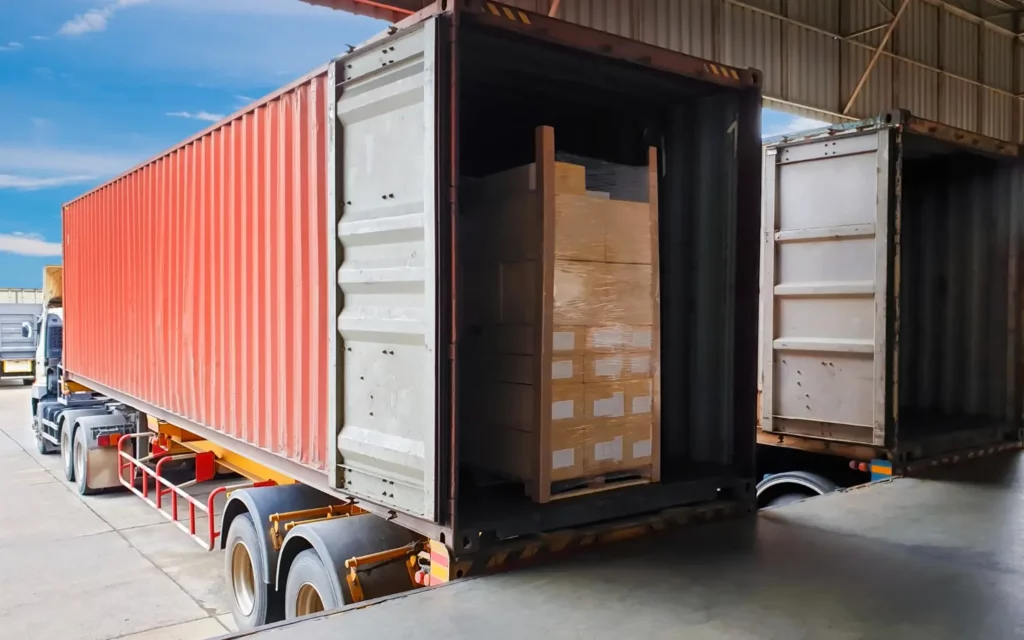In today’s competitive business environment, efficient logistics and transportation are critical for the success of any organization. Load planning has emerged as a key strategy to optimize delivery efficiency and maximize profitability.
It involves strategically organizing and arranging items within vehicles or containers to maximize space utilization and minimize transportation costs. By leveraging advanced algorithms and intelligent software solutions, load planning enhances delivery efficiency, reduces fuel consumption, and improves capacity utilization.
This article will explore the strategies, tools, and best practices of load planning, showcasing its potential to revolutionize the logistics industry and drive business success.
What is load planning?
Load planning refers to the process of efficiently organizing and arranging cargo or goods within a vehicle, such as a truck, ship, or airplane. It involves determining the optimal arrangement and distribution of items to maximize space utilization, ensure safe transportation, and optimize the overall efficiency of the logistics operation.
Load planning typically involves considering various factors, such as the size, weight, and shape of the goods and any specific requirements or restrictions related to the transportation mode or regulations.
The goal is to achieve a well-balanced and stable load that minimizes the risk of damage during transit, reduces transportation costs, and maximizes the vehicle’s capacity.
Load planning may also consider other factors, such as the order of loading and unloading, the sequence of stops along the route, and any necessary equipment or special handling requirements. Using load planning software or systems can help automate and optimize the process by considering multiple variables and generating efficient loading plans.
Efficient load planning is crucial in supply chain management and logistics to ensure timely and cost-effective delivery of goods while maintaining customer satisfaction and minimizing operational risks.

Load Planning Process
Gathering Shipment Information
This step involves gathering comprehensive information about the shipment. It includes details such as the type of goods, their dimensions, weight, fragility, and any special handling requirements.
Additionally, it is essential to be aware of any applicable regulations or restrictions, such as hazardous material guidelines or temperature control requirements. By collecting this information, you can accurately assess the specific constraints and considerations that will impact the load planning process.
Assessing Load Capacity and Constraints
In this step, you evaluate the capacity and limitations of the transportation vehicle or container. Consider factors like the maximum weight capacity, volume restrictions, load distribution requirements, and any legal or safety regulations that must be followed.
For example, certain vehicles may have weight limits for specific axle configurations or height restrictions for certain types of cargo. By assessing these constraints, you ensure that the load plan adheres to the vehicle’s capabilities and complies with relevant regulations, preventing any potential issues during transportation.
Determining Optimal Load Configuration
This step focuses on determining the best arrangement of items within the transportation vehicle to maximize its load capacity and efficiency. It involves considering various factors, such as the size, weight, and shape of the goods.
By optimizing the use of available space, you aim to achieve a well-balanced load that minimizes wasted space and ensures stability during transit. This process may involve considering different loading techniques, such as stacking, nesting, or using load securing mechanisms, to achieve the desired load configuration.
Additionally, it is important to consider any special requirements, such as fragile items that need to be placed on top or heavy items that require a sturdy base, to prevent damage or shifting during transport.
Sequencing and Scheduling Load
Once the optimal load configuration is determined, this step involves establishing the sequence and schedule for loading and unloading the cargo. Consider factors such as the order of delivery, route optimization, and any specific requirements or constraints related to the delivery locations.
Efficient sequencing can help streamline the logistics process by reducing unnecessary handling efforts and minimizing the time spent at each stop.
By optimizing the loading sequence, you can also ensure that the items needed first during unloading are positioned towards the front or easily accessible, reducing the overall unloading time and improving efficiency.

Challenges of load planning
Varying load sizes and shapes
Different types of products come in various shapes and sizes, making it challenging to optimize the arrangement of the load within a given space.
Irregularly shaped items or items with varying dimensions require careful consideration to maximize space utilization and ensure stable stacking.
Time-sensitive shipments
When dealing with time-sensitive shipments, such as perishable goods or urgent deliveries, load planning becomes crucial.
It is essential to prioritize these shipments and plan the loading sequence accordingly to minimize delays and ensure timely deliveries.
Route limitations
Load planning must take into account route restrictions and limitations. Certain roads or areas may have weight restrictions, height restrictions, or restrictions on hazardous materials.
Planners need to be aware of these limitations and factor them into the load planning process to ensure compliance and avoid delays or penalties.
Limited resources
Load planning involves optimizing the allocation of limited resources such as vehicles, drivers, and loading/unloading equipment.
Planners need to consider the availability and capacity of these resources while efficiently assigning loads to minimize empty space and reduce unnecessary trips.
Balancing efficiency and sustainability
Achieving a balance between efficiency and sustainability is another challenge. Load planners need to optimize routes and loads to minimize fuel consumption, reduce emissions, and maximize vehicle utilization while still meeting delivery deadlines and customer expectations.
This requires careful consideration of factors such as load consolidation, route optimization, and the use of eco-friendly transport options.

Benefits of Implementing Load Planning
- Increased efficiency: Implementing load planning helps optimize the use of available resources, such as trucks, warehouses, and personnel. By effectively organizing and distributing loads, companies can minimize empty miles, reduce waiting times, and maximize the utilization of their assets. This leads to improved operational efficiency and reduced transportation costs.
- Cost reduction: Load planning enables companies to identify and eliminate inefficiencies in their transportation processes. By optimizing routes, consolidating shipments, and minimizing empty space in trucks or containers, companies can reduce fuel consumption, labor costs, and overall transportation expenses. Additionally, effective load planning helps avoid penalties and fines associated with overloading vehicles.
- Improved customer service: Load planning helps ensure timely and accurate deliveries, which enhances customer satisfaction. By optimizing routes and schedules, companies can minimize delivery lead times, reduce delays, and provide customers with reliable and predictable service. This leads to improved customer loyalty and increased repeat business.
- Enhanced safety: Proper load planning includes considering weight distribution, load securing, and compliance with safety regulations. By ensuring that loads are properly balanced, secured, and within legal weight limits, companies can mitigate the risk of accidents, damage to goods, and injuries to drivers or other road users. This contributes to a safer working environment and protects the company’s reputation.
- Streamlined operations: Load planning allows companies to streamline their transportation operations by coordinating the movement of goods across different locations. By centralizing load planning activities, companies can optimize resource allocation, minimize manual errors, and improve overall operational coordination. This leads to smoother workflows and reduced administrative burdens.
- Data-driven insights: Load planning involves collecting and analyzing data related to shipments, routes, and resources. Companies can gain valuable insights into their transportation operations by leveraging advanced analytics and optimization algorithms. These insights can help identify areas for improvement, detect patterns and trends, and make data-driven decisions to optimize load planning and overall logistics further processes.
Optimize delivery processes with Detrack
Optimizing delivery processes is essential for companies seeking to stay ahead of the curve. Load planning plays a crucial role in achieving this optimization, offering a range of benefits that can significantly impact a company’s bottom line.
To optimize your delivery processes and harness the benefits of load planning, consider using Detrack, a leading logistics software solution. Detrack offers a comprehensive suite of tools and features designed to streamline load planning, track shipments, and improve operational efficiency.
With Detrack, you can automate load allocation, optimize routes, monitor delivery progress in real-time, and gain valuable insights into your logistics operations. Say goodbye to manual load planning and hello to a more efficient and cost-effective delivery process.
Visit our website today to learn more about Detrack and how it can revolutionize your delivery operations.










